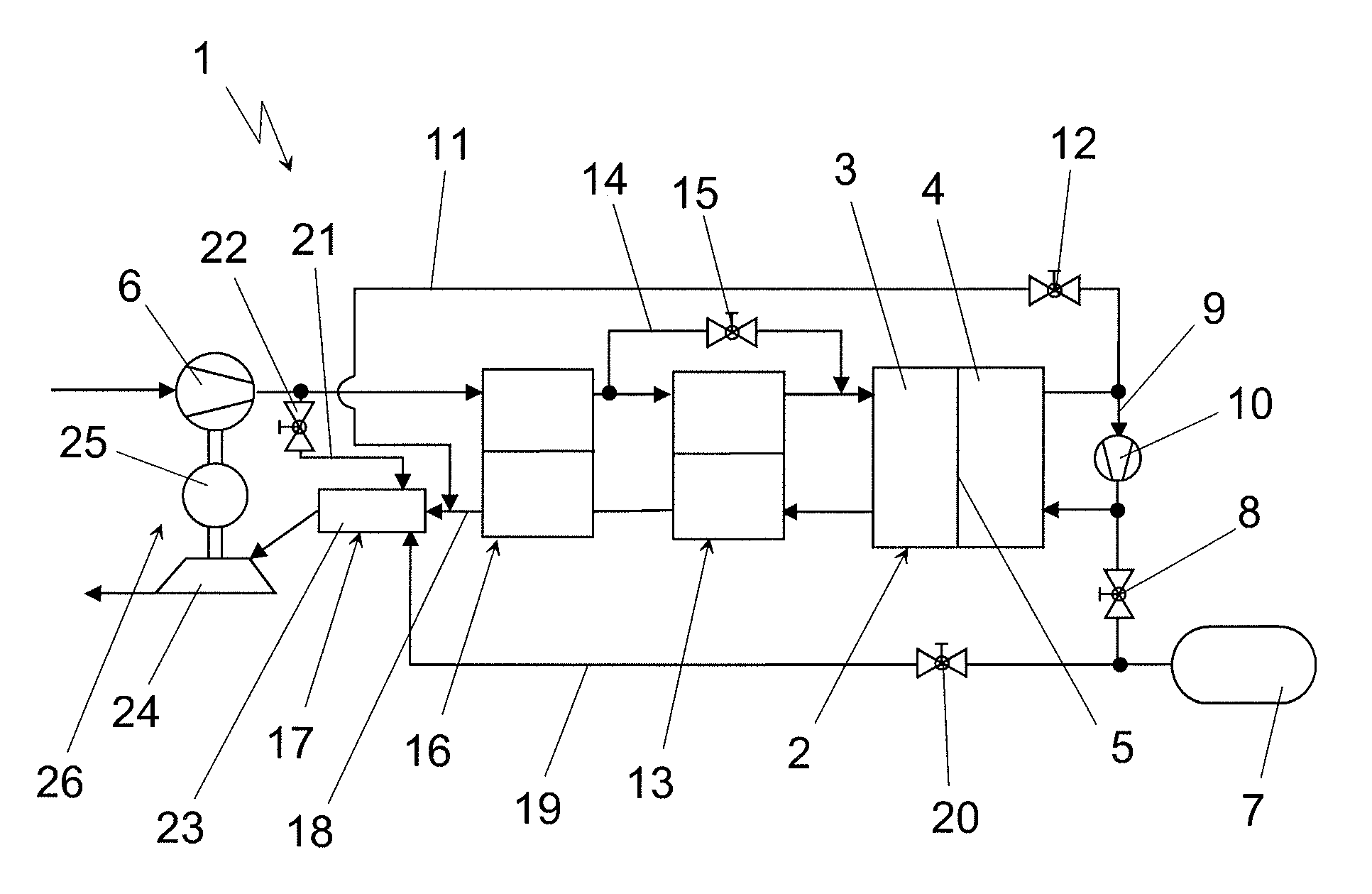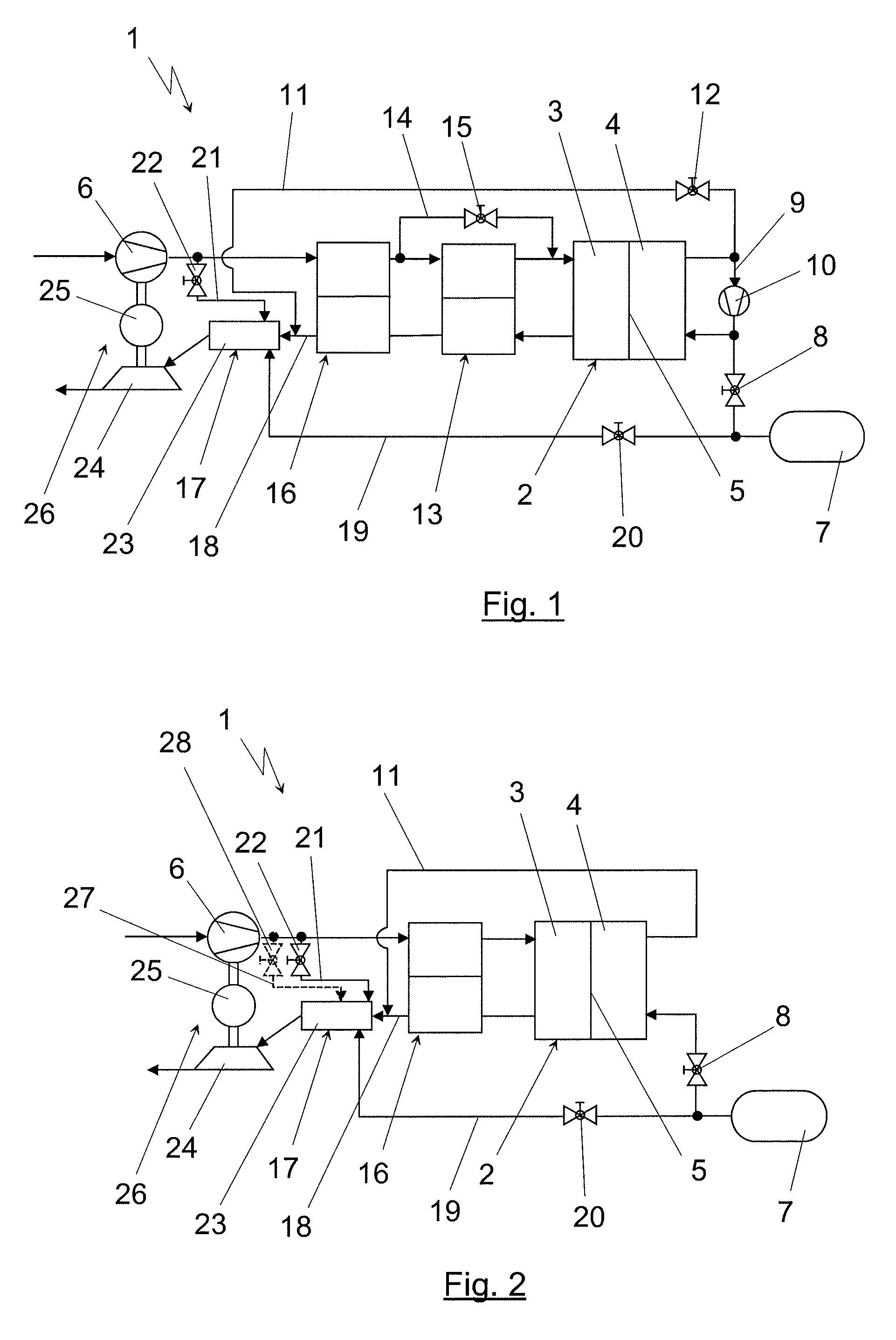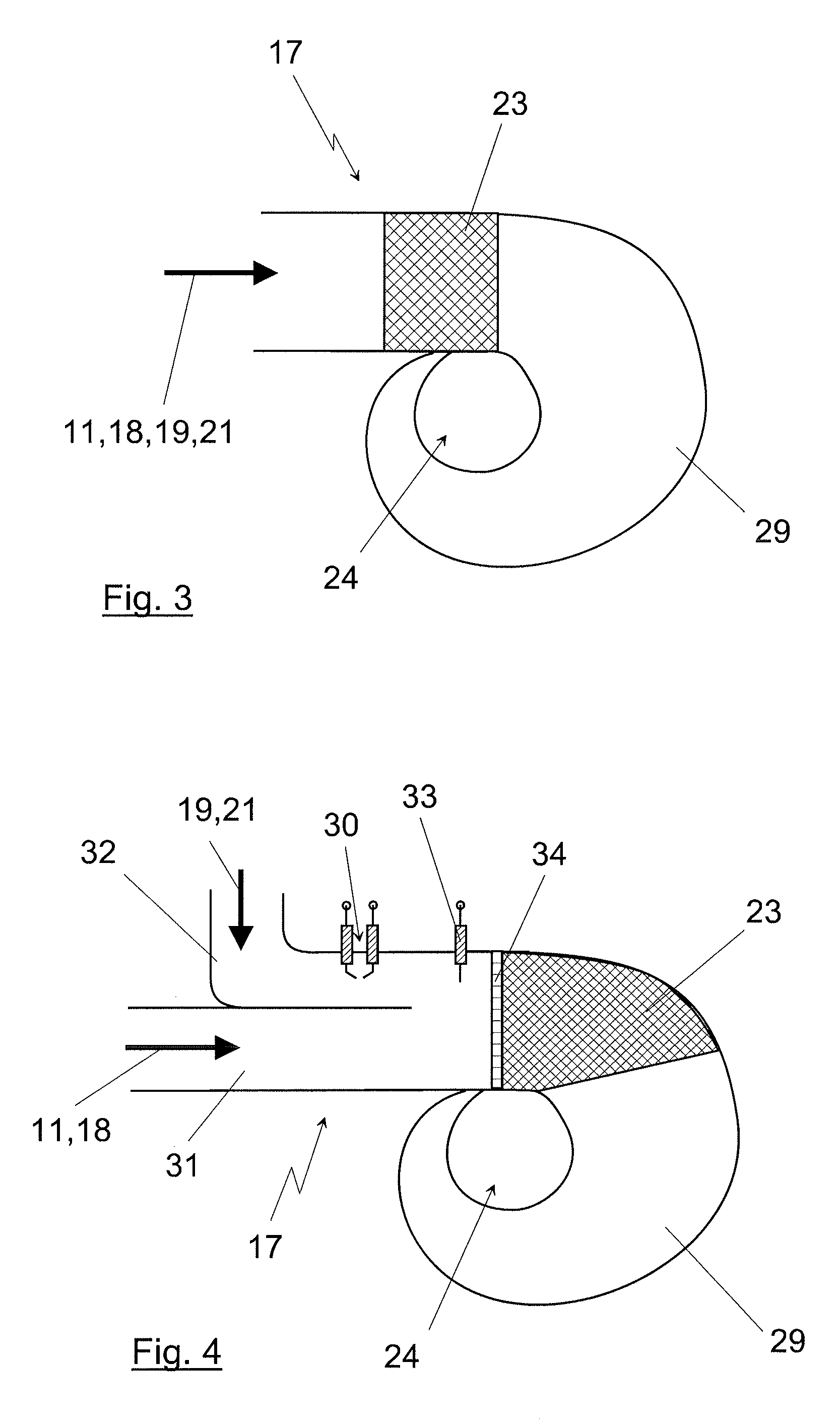Device for Providing Hot Exhaust Gases
a technology of hot exhaust gas and turbine, which is applied in the direction of machines/engines, electrochemical generators, lighting and heating apparatus, etc., can solve the problems of generating a certain degree of residual heat in the exhaust gas, affecting the efficiency of the heat exchanger, etc., to achieve high controllability and reliable ignition of the fuel, and the effect of safe and reliable starting
- Summary
- Abstract
- Description
- Claims
- Application Information
AI Technical Summary
Benefits of technology
Problems solved by technology
Method used
Image
Examples
Embodiment Construction
[0022]FIGS. 1 and 2 show two different designs of fuel cell systems 1, which are the preferred, but not the sole, application for the device according to the invention for the provision of hot exhaust gases. The core of the fuel cell system 1 is a fuel cell 2, which may for example be a stack of PEM fuel cells. A cathode compartment 3 and an anode compartment 4 of the fuel cell 2 are separated from each other by proton-conducting membranes 5. The oxidant for the operation of the fuel cell 2 is typically the oxygen in the air, air being piped into the cathode compartment 3 via an air conveying device 6. The anode compartment 4 is supplied with hydrogen or with a gas containing hydrogen. In the illustrated embodiment, hydrogen is to be supplied to the anode compartment 4 of the fuel cell 2 from a compressed gas reservoir 7. The hydrogen stored under high pressure in this compressed gas reservoir 7 is fed into the anode compartment 4 via a valve device 8 and in this process expanded to...
PUM
| Property | Measurement | Unit |
|---|---|---|
| temperature | aaaaa | aaaaa |
| specific surface area | aaaaa | aaaaa |
| electric energy | aaaaa | aaaaa |
Abstract
Description
Claims
Application Information
 Login to View More
Login to View More - R&D
- Intellectual Property
- Life Sciences
- Materials
- Tech Scout
- Unparalleled Data Quality
- Higher Quality Content
- 60% Fewer Hallucinations
Browse by: Latest US Patents, China's latest patents, Technical Efficacy Thesaurus, Application Domain, Technology Topic, Popular Technical Reports.
© 2025 PatSnap. All rights reserved.Legal|Privacy policy|Modern Slavery Act Transparency Statement|Sitemap|About US| Contact US: help@patsnap.com



